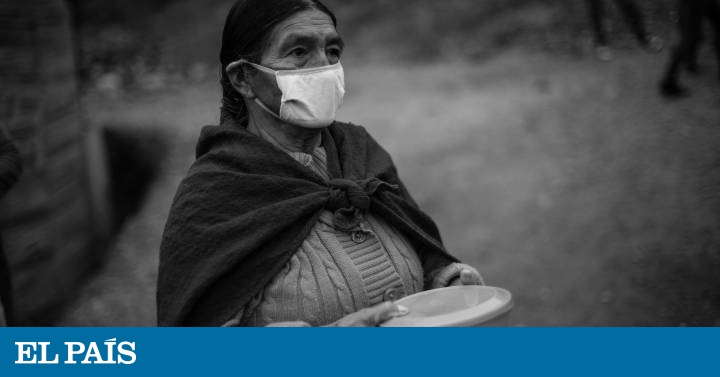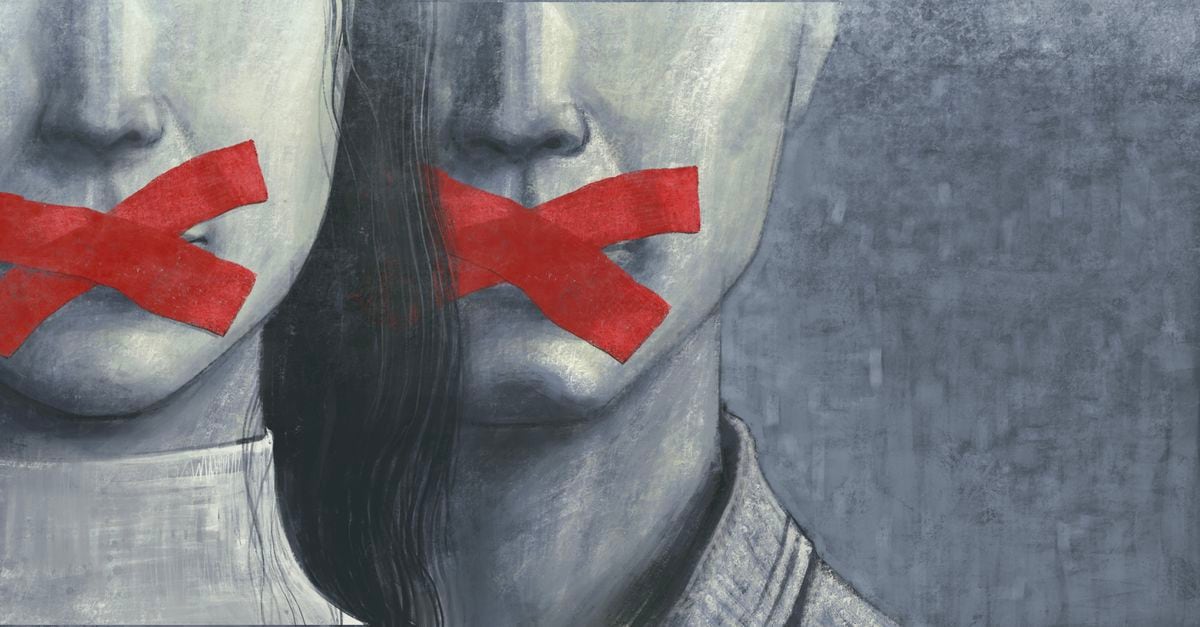1 Sunk between the hills of the north of the city of Lima, between the districts of Puente Piedra and Ventanilla, is the human settlement of Valle del Sol. Eight families from different provinces of Peru arrived in 2008 and built their houses on land that , in the logic of the Lima hills, in the end it belongs to whoever lives there. Those first eight clans were followed by many others, and currently 280 families live who have seen here the possibility of raising a modest house and building a prosperous life as close as possible to the metropolis in such a centralized country. But life is hard in a neighborhood so young that it hardly has power lines as the only service. Valle del Sol can only be reached with a transport service that departs from a garage in Puente Piedra, they do not have a fixed schedule and the cost is 2.5 soles ($ 0.71). The settlement has a central dirt road where cars enter; To move from house to house, you have to walk the paths traced by the steps of the neighbors themselves.
2The Government promised $ 100 bonds and aid for the most vulnerable, but in Valle del Sol all families are vulnerable and not half have received the promised assistance. For this reason, after the days of quarantine, the only thing that keeps the food dishes full is the solidarity work of the women of the hill; They are the ones who sustain life in difficult times, organizing common pots and strengthening relationships between neighbors so that no family is left behind. At three in the afternoon a queue of 40 women forms with their containers to take a ration from the common pot. The metal container of one hundred liters waits steaming in the door of Gina's house, the place chosen that day to cook and distribute the portions of chicken broth. Soups and stews are common in common pots, as food is boiled in plenty of water.
3The State of Emergency decreed by Peru in mid-March in the face of the covid-19 pandemic has exposed the precariousness in the hills. Most residents of Valle del Sol, like most Peruvians, have informal jobs that provide them with daily income and have been unable to practice for months due to quarantine restrictions. Adelaida López's fridge is almost empty. However, that night she and her family ate chicken soup from the same common pot that went up to their house on top of the hill.
4Justina Cigüeñas, 74, looks out the window where she has raised the white flag. Out of desperation, many families have been forced to make hunger visible with this symbol. In many Latin American countries, including Peru, those who can no longer endure their home longer without income or aid of any kind are raising the signal of surrender, and in these cases, neighborhood support is the last thing left. 5At three o'clock in the afternoon, a queue of 40 women forms, each with their container to take their ration. For each common pot the organizers only ask for one sol (0.25 euros), with that, plus the donations they can collect, the volunteer cooks prepare a great soup that, for at least one day, will calm the famine of the families. 6The cooks are the same neighbors who from eight in the morning get together and prepare the ingredients for the common pot. In the neighboring settlement of Valle del Sol known as Belaunde Terry, the cooks cut many potatoes, some carrots and other vegetables that will accompany chicken casings as the main nutrient of the dish. They are preparing 'cau cau', a typical stew of Peruvian gastronomy. 7Sebastiana Cano, 77, arrived from her town in Ancash before the pandemic. She is a midwife and came to Lima to help give birth to her daughter-in-law, Flor Fernández, and with the quarantine she could no longer leave. Here she cannot receive her pension of 65 soles (15.5 euros) every two months, and her son who worked in a shoe factory was unemployed due to quarantine, and they have not received the government bonus. Now there are three adults, a child and a five-month-old baby at home. 8A group of neighbors go home with rations for their families. One knows that she is hungry, but she also knows if the neighbor is right or wrong, if the child became ill and any problem or concern is discussed at the trails and crossings of the hill. In the absence of establishments for public use, the roads are meeting points to share problems and try to give solutions collectively, since neither the municipal nor the government authorities reach these remote points within the Peruvian capital. 9Angélica and her daughter Melanixa and Gina rest for a moment after distributing the last portion of the common pot. Angélica has been one of the organizers, previously she has also participated in support groups to bring food to the hills of Lima during the quarantine. 10The houses of Valle del Sol are modest wooden constructions with slits, where the cold drains in winter, and a calamine roof that in summer multiplies the heat inside the houses. These, in many cases, have no pavement, the ground is made of stepped earth. A wooden and metal box on raw earth. 11Adila Caisara, 23, came from Iquitos to be with the father of her children because he found a job in Lima, but she wants to return and the quarantine has left her stranded in Valle del Sol. She is two months pregnant with her fourth child and she is not prepared for the winter cold in Lima, because of arthritis her hands and bones hurt. Adila also wants to return because she feels abandoned by her partner, who has left another woman pregnant and is not going to take care of her or their offspring. 12A wall with sharp crystals on top is the limit of the hill. On the other side there is only a declining quarry where many of the men from Valle del Sol have worked. Angélica and some of the neighbors watch overhead wondering when the activity will return. 13A group of neighbors with their children wait at the top of the Valle del Sol hill. The Internet signal does not reach the low areas, so many neighbors have to go up with their children so that they can do their homework with their cell phone in the top, where it does arrive. While the students do the homework, they get together to talk. 14The power line goes up some posts to the Valle del Sol hill and is distributed irregularly through the houses of the 280 families. Not all have electricity, electricity reaches the lower area well, which even has street lamps. But by the highest and furthest from the hill, at night, starting at six in the afternoon, you walk in the dark on the slopes and paths that connect the houses. 15The problems faced by these women are due to cold, hunger, raising children, abandonment of their partners and neglect by the State. Some are waiting for the quarantine to end to return to their province, others have made the hill their home and try to get on with their lives and that of their own. Marionela Leon Santos has lived in Valle del Sol for three months, she moved here to have her son, she is now eight months old, her baby is close to this world.
16Deisi Altamirano, 21, supports her daughter Adri, two, who must wear a prosthesis to correct the effect of Blount's disease. Two months ago they ran out of savings and they have not received the aid voucher promised by the Government, although thanks to the common pots they can avoid hunger, they need money to buy diapers and other care products for the little girl. 17Adelaida Briones warms her pot in the outdoor kitchen of her house at the top of the hill; the fire is achieved with lumber collected from some abandoned buildings. You are heating up what was left over at lunch from the stock pot by adding a little water to stretch it out. He uses the wood stove because he can no longer get them to buy the gas bottles; They calculate an expense of 50 soles a week (12 euros) in food, but it is never enough and you have to do the miracle of multiplying your food as you like. 18Adelaida prepares to serve chicken soup from the stock pot for dinner. She lives with her husband, her young son and her brother-in-law, who has not been working for several months due to the covid-19 pandemic. 19Angélica helps her father by breaking stones and flattening a piece of land in Belaunde, the neighboring hill to Valle del Sol. Angélica has worked as a waitress in a restaurant in Ancón, but with the virus pervading Peru, she is afraid of exposing herself in a job of face the public. They are lucky to obtain an income during the quarantine by breaking stones with blows, they will be paid 2,500 soles (600 euros) to flatten and condition the land for future construction. 20A girl waits for her mother at the front door along with the dogs and puppies on the street with whom she plays all day. It is the neighbors who take care of the children who are left alone on the hills while the parents are away. In these times of social isolation, mutual support will be the only thing that will move us forward.
White flags in Valle del Sol
2020-08-06T22:28:25.788Z

Women's solidarity fills the pots against the hunger pandemic in the hills of Lima1 Sunk between the hills of the north of the city of Lima, between the districts of Puente Piedra and Ventanilla, is the human settlement of Valle del Sol. Eight families from different provinces of Peru arrived in 2008 and built their houses on land that , in the logic of the Lima hills, in the end it belongs to whoever lives there. Those first eight clans were followed by many others, and curren...








